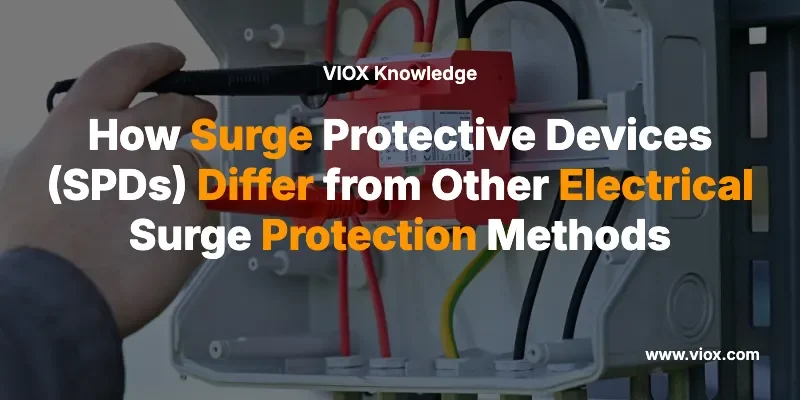Understanding Surge Protective Devices (SPDs)
Definition and Core Function

A dispositif de protection contre les surtensions (SPD) is a protective device for limiting transient voltages by diverting or limiting surge current and is capable of repeating these functions as specified. SPDs were previously known as Transient Voltage Surge Suppressors (TVSS) or secondary surge arrestors (SSA), but the terminology was standardized to SPD with the adoption of ANSI/UL 1449 3rd Edition in 2009.
The fundamental principle behind SPDs involves parallel connection to the power supply circuit of the loads they protect. SPD connected in parallel has a high impedance. Once the transient overvoltage appears in the system, the impedance of the device decreases so surge current is driven through the SPD, bypassing the sensitive equipment.
Système de classification SPD
According to the National Electrical Code (NEC) and ANSI/UL 1449, SPDs are classified into three main types based on their installation location and intended application:
Type 1 SPDs: Service Entrance Protection
Type 1: Permanently connected, intended for installation between the secondary of the service transformer and the line side of the service disconnect overcurrent device (service equipment). Their main purpose is to protect insulation levels of the electrical system against external surges caused by lightning or utility capacitor bank switching.
Principales spécifications :
– Current wave: 10/350 µs impulse current
– Current handling: 50,000 to 200,000 amperes
– Installation: Service entrance equipment
– Primary protection against direct lightning strikes
Type 2 SPDs: Distribution Panel Protection
A Type 2: Permanently connected, intended for installation on the load side of the service disconnect overcurrent device (service equipment), including brand panel locations. Their main purpose is to protect the sensitive electronics and microprocessor based loads against residual lightning energy, motor generated surges and other internally generated surge events.
Principales spécifications :
– Current wave: 8/20 µs current wave
– Current handling: 20,000 to 100,000 amperes
– Installation: Distribution panels and load centers
– Primary protection for building electrical systems
DPS de type 3 : Protection au point d'utilisation
Type 3: Point-of-utilization SPDs installed at a minimum conductor length of 10 meters (30 feet) from the electrical service panel to the point-of-utilization.
Principales spécifications :
– Current wave: Combination 1.2/50 μs voltage and 8/20 μs current
– Current handling: 5,000 to 20,000 amperes
– Installation: Near protected equipment
– Final layer of localized protection
Other Electrical Surge Protection Methods
Uninterruptible Power Supply (UPS) Systems
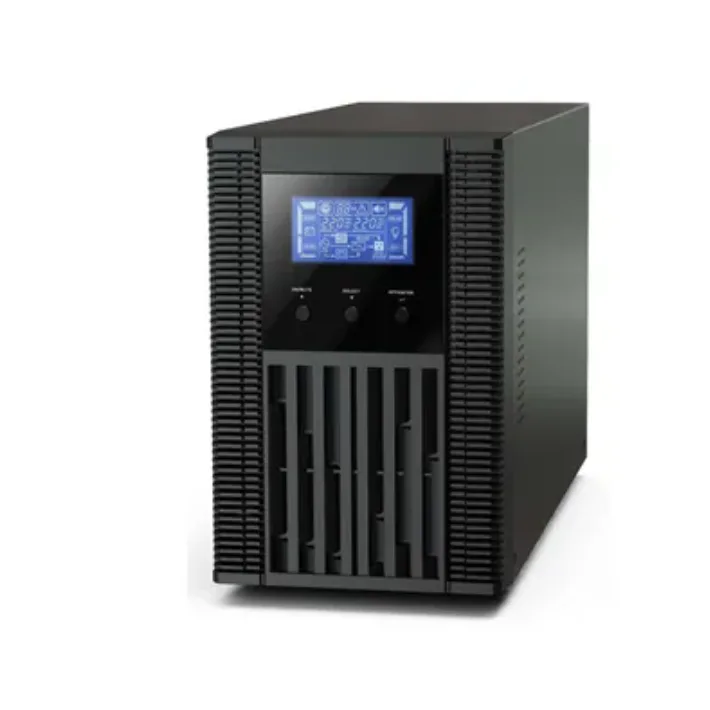
UPS systems provide comprehensive power protection that extends beyond simple surge protection. These devices continuously monitor incoming voltage and respond to power quality issues by switching to battery power during outages or severe disturbances.
UPS Protection Characteristics:
– Temps de réponse: 2-10 milliseconds for power transfer
– Champ d'application de la protection: Individual equipment level
– Gestion actuelle: Variable based on unit capacity
– Additional Functions: Battery backup, power conditioning, voltage regulation
– Fourchette de coûts: $100-5,000+ depending on capacity
UPS Limitations for Surge Protection:
– Slower response time compared to SPDs
– Limited surge current handling capacity
– Requires battery maintenance and replacement
– Not designed for high-energy lightning surges
Power Strip Surge Protectors vs. Basic Power Strips
Basic Power Strips
A power strip is a block of electrical sockets that allows multiple electrical devices to be powered from a single electrical outlet. Basic power strips provide no surge protection despite visual similarity to surge protectors.
Caractéristiques :
– Function: Power distribution only
– Protection: Circuit breaker for overloads only
– Response Time: No surge protection capability
– Cost: $10-30
– Application: Non-critical devices where surge protection isn’t needed
Consumer Surge Protector Power Strips
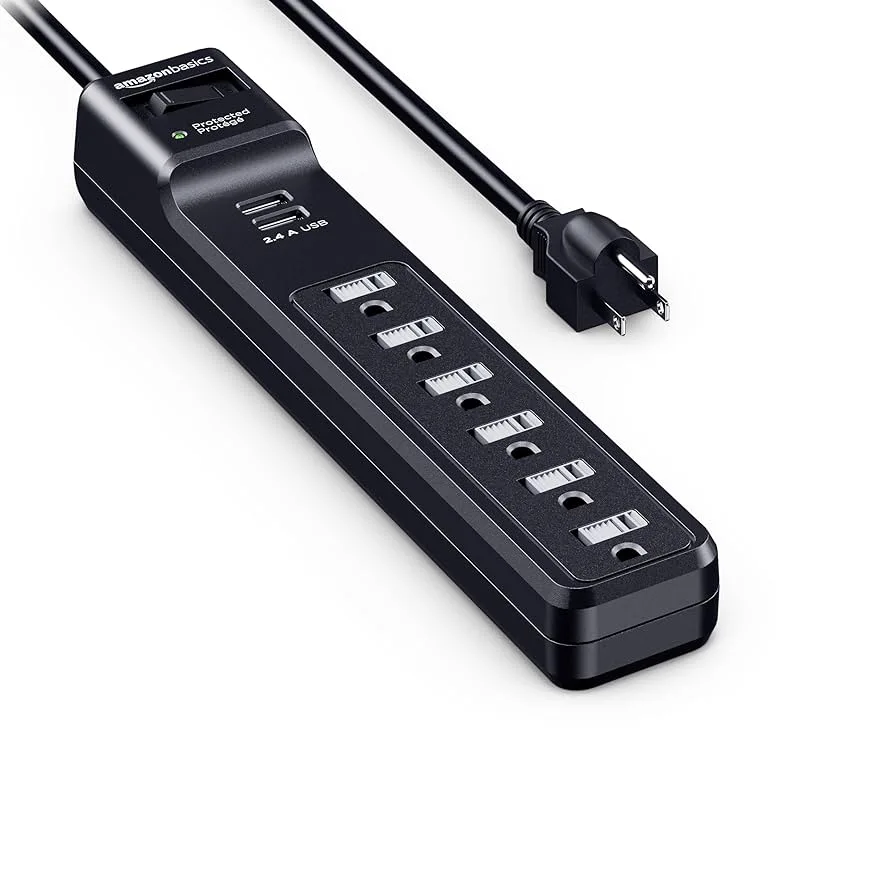
The main difference between a surge protector and a power strip is that the surge protector contains an MOV. The MOV diverts harmful electrical surges from connected devices.
Caractéristiques :
– Current Handling: 1,000-4,000 joules typically
– Response Time: 25 nanoseconds (MOV-based)
– Protection Scope: Only devices plugged directly into the strip
– Clamping Voltage: 330-600 volts
– Lifespan: Degrades with each surge event
Metal Oxide Varistors (MOVs)
Metal Oxide Varistors are voltage-dependent resistors that form the core technology in most consumer surge protectors. MOVs contain a ceramic matrix of zinc oxide grains with grain boundaries forming diode junctions.
MOV Operation:
– Normal Conditions: High resistance with minimal current flow
– Surge Conditions: Avalanche breakdown creates low resistance path
– Temps de réponse: 25 nanoseconds
– Gestion actuelle: 1,000-20,000 amperes depending on size
MOV Limitations:
– Progressive degradation with repeated surge exposure
– Eventually requires replacement after handling multiple surges
– No indication of protection status in basic implementations
Transient Voltage Suppression (TVS) Diodes
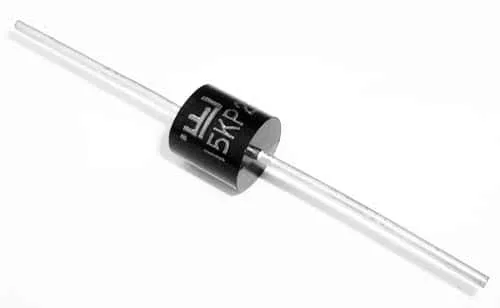
TVS diodes are specialized avalanche diodes designed for ultra-fast surge protection in sensitive electronics.
TVS Diode Characteristics:
– Temps de réponse: 1 picosecond (fastest available)
– Gestion actuelle: 10,000-30,000 amperes peak pulse
– Voltage Precision: Very precise clamping levels
– Durée de vie: No aging effects, excellent long-term stability
– Application: PCB-level protection in electronic equipment
Advantages Over MOVs:
– No degradation over time
– Extremely fast response for ESD protection
– Precise voltage clamping characteristics
– Reliable operation over device lifetime
Gas Discharge Tubes (GDTs)
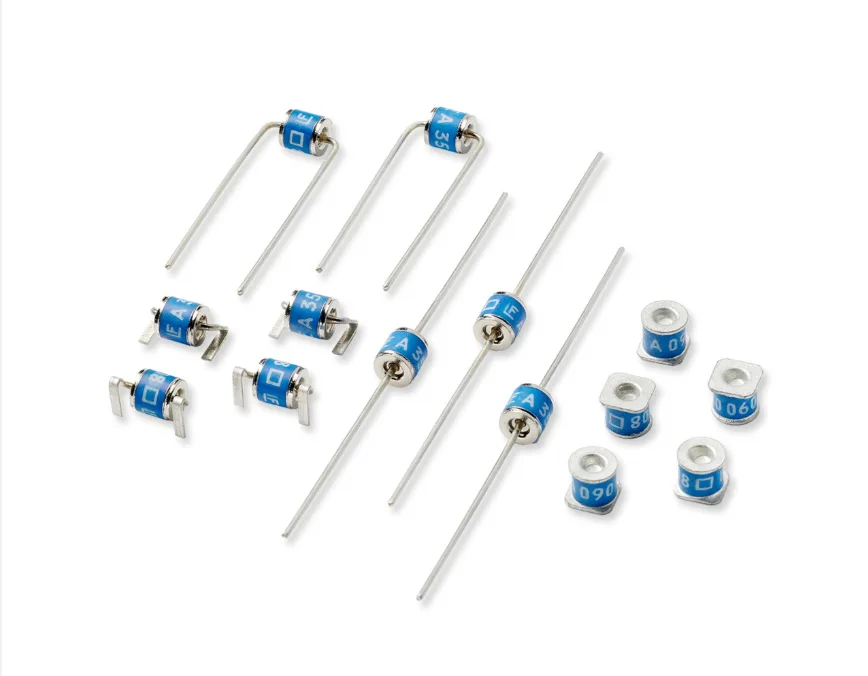
Gas Discharge Tubes function as voltage-controlled switches using inert gas discharge principles, commonly used in telecommunications equipment.
GDT Characteristics:
– Temps de réponse: <1 microsecond
– Gestion actuelle: 10,000-40,000 amperes
– Normal State: Very high impedance, minimal capacitance
– Activated State: Low impedance conduction path
– Applications: Telecommunications, high-voltage protection
Circuit Breakers and Safety Protection
Traditional Circuit Breakers
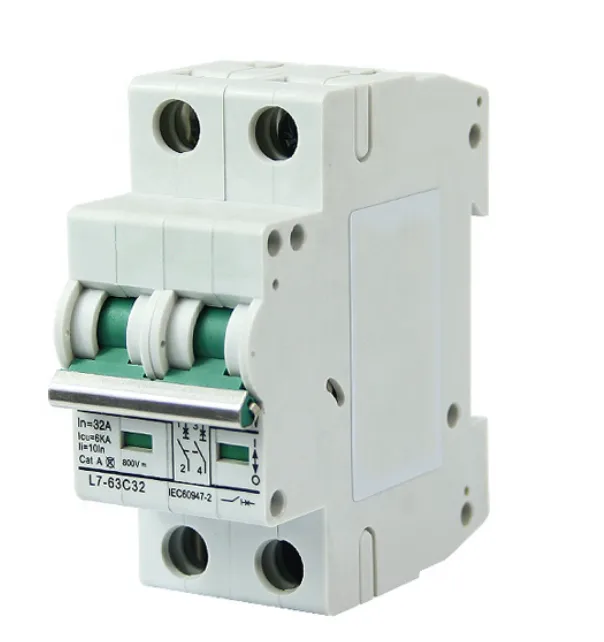
Circuit breakers provide overcurrent protection but are not designed for surge protection.
Circuit Breaker Specifications:
– Fonction: Overcurrent and short circuit protection
– Temps de réponse: 16-100 milliseconds
– Protection contre les surtensions: None (too slow for voltage spikes)
– Gestion actuelle: Rated amperage for continuous operation
– Application: General electrical circuit protection
GFCI and AFCI Protection
– GFCI: Ground fault protection (5 mA sensitivity, 25-30 ms response)
– AFCI: Arc fault protection for fire prevention
– Fonction: Safety protection, not surge protection
– Requirements: Mandated by NEC in specific locations
Lightning Protection Systems
Lightning Arresters
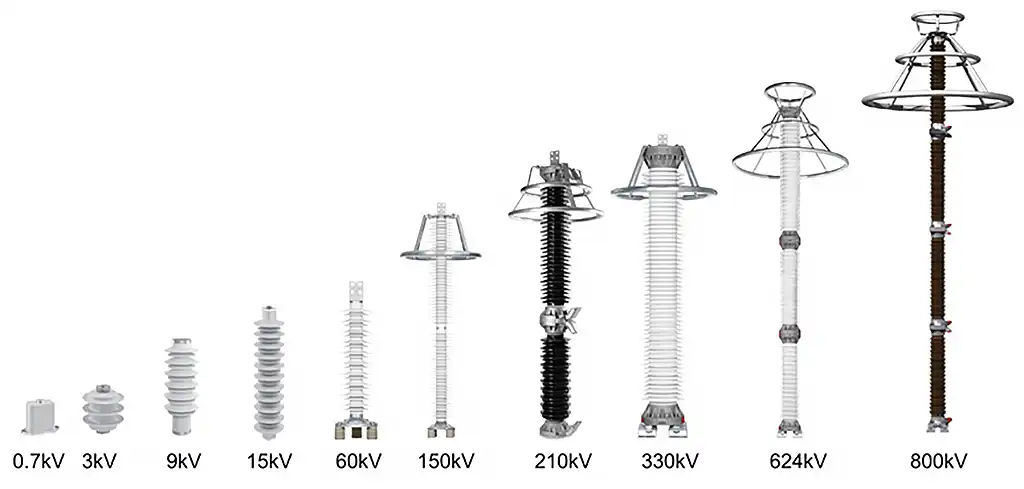
Lightning arresters protect transmission and distribution systems from direct lightning strikes and switching transients.
Lightning Arrester Characteristics:
– Gestion actuelle: 100,000+ amperes
– Voltage Levels: Transmission system voltages (>1000V)
– Temps de réponse: Microseconds
– Application: Utility transmission and distribution systems
– Coût: $1,000-10,000+ for transmission-class devices
Lightning Rods (Air Terminals)
– Fonction: Provide preferred lightning strike path
– Protection de l'environnement: Building structural protection
– Intégration: Works with grounding system
– Gestion actuelle: Full lightning current (up to 200,000 amperes)
Power Quality and Conditioning Equipment
Voltage Regulators and Stabilizers
Power conditioners focus on steady-state power quality rather than transient surge protection.
Voltage Regulation Characteristics:
– Fonction: Maintain consistent voltage levels (±1-5%)
– Temps de réponse: Milliseconds for voltage correction
– Type de protection: Brownout and overvoltage protection
– Application: Areas with poor utility power quality
– Coût: $100-1,000+ depending on capacity
Isolation Transformers
– Fonction: Electrical isolation and surge reduction
– Protection de l'environnement: Common mode surge attenuation (-60dB or better)
– Traitement de la tension: 30kV impulse input, 10kV output (typical)
– Application: Medical equipment, sensitive instrumentation
Power Line Filters and EMI Protection
– Fonction: Filter electromagnetic interference and electrical noise
– Opération: Continuous filtering of conducted EMI/RFI
– Composants: Inductors, capacitors, ferrite cores
– Scope: Complement surge protection, don’t replace it
SPDs vs Other Electrical Surge Protection Methods
| Méthode | Fonction | Response | Localisation | Actuel | Tension | Durée de vie | Coût | Applications |
|---|---|---|---|---|---|---|---|---|
| SPD Type 1 | Lightning surge | 25 ns | Service entry | 50-200 kA | 700-1500V | High durability | Haut | Service panels |
| SPD Type 2 | Distribution | 25 ns | Distribution | 20-100 kA | 600-1200V | High durability | Moyen | Branch circuits |
| SPD Type 3 | Point-of-use | 25 ns | Near equipment | 5-20 kA | 330-600V | Med durability | Faible | Sensitive elec |
| UPS Systems | Power backup | 2-10 ms | Equipment lvl | Variable | ±3-5% | Battery depend | Haut | Critical equip |
| Disjoncteurs | Surintensité | 16-100 ms | Distribution | Variable | Aucun | Très élevé | Faible | General circuit |
| MOVs | Voltage clamp | 25 ns | Device level | 1-20 kA | Variable | Degrades | Very low | Component prot |
| TVS Diodes | Fast transient | 1 ps | PCB level | 10-30 kA | Very precise | No aging | Faible | Électronique |
| Gas Discharge | Haute tension | <1 µs | Equipment lvl | 10-40 kA | Haute tension | Très élevé | Moyen | Telecom |
| Lightning Arrest | Lightning prot | Microseconds | Transmission | 100+ kA | kV levels | Très élevé | Haut | Power systems |
| Power Condition | Power quality | Continuous | Equipment lvl | Load dependent | ±5-10% | Haut | Haut | Sensitive equip |
| Isolation Trans | Electrical isol | Continuous | Equipment lvl | Load dependent | Good isolation | Très élevé | Haut | Medical equip |
Comprehensive Comparison: SPDs vs. Other Protection Methods
Response Time Analysis
Ultra-Fast Protection (Picoseconds):
– TVS Diodes: 1 picosecond – Ideal for ESD and fast transients
Fast Protection (Nanoseconds):
– SPDs (all types): 25 nanoseconds – Excellent for voltage surges
– MOVs: 25 nanoseconds – Good for moderate surges
Moderate Speed (Microseconds):
– Gas Discharge Tubes: <1 microsecond – Suitable for high-energy events
Slow Response (Milliseconds):
– UPS Systems: 2-10 milliseconds – Adequate for power transfer
– GFCI/AFCI: 25-30 milliseconds – Safety-focused applications
– Circuit Breakers: 16-100 milliseconds – Overcurrent protection only
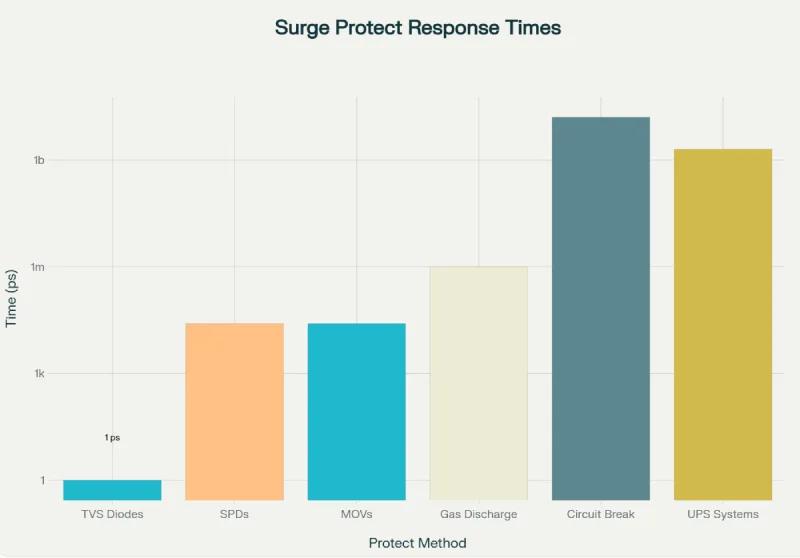
Current Handling Capacity Comparison
Highest Energy (100+ kA):
– Lightning Arresters: Transmission-level protection
– SPD Type 1: 50-200 kA service entrance protection
High Energy (20-100 kA):
– SPD Type 2: 20-100 kA distribution protection
– Gas Discharge Tubes: 10-40 kA telecommunications protection
Moderate Energy (5-30 kA):
– SPD Type 3: 5-20 kA point-of-use protection
– TVS Diodes: 10-30 kA precision electronics protection
Limited Energy (1-20 kA):
– Consumer Surge Protectors: 1-4 kA device protection
– MOVs: 1-20 kA component protection
No Surge Protection:
– Basic Power Strips: Circuit breaker rating only
– Circuit Breakers: Overcurrent protection, no surge handling
Installation Location and System Integration
Hierarchical SPD Installation
SPDs follow a systematic installation approach providing coordinated protection:
1. DOCUP de type 1: Service entrance – first line of defense
2. DOCUP de type 2: Distribution panels – main building protection
3. DOCUP de type 3: Point-of-use – final equipment protection
Other Method Installations
– UPS Systems: Equipment level, requires load connections
– Consumer Surge Protectors: Device level, portable
– Protection des circuits: Distribution panels, safety-focused
– Protection des composants: PCB level or within equipment
– Power Quality Equipment: Equipment level, specific applications
Standards and Regulatory Compliance
SPD Standards Framework
– ANSI/UL 1449: Primary North American SPD standard
– IEC 61643 Series: International SPD standards
– NEC Article 285: Installation requirements for SPDs
– Mandatory Requirements: NEC 2020+ requires SPDs for dwelling units
Other Method Standards
– UPS Systems: UL 1778, IEC 62040 series
– Disjoncteurs: UL 489, IEC 60947 series
– Consumer Surge Protectors: UL 1449 (Type 3 classification)
– Protection des composants: Various component-specific standards
Economic and Practical Considerations
Analyse coûts-avantages
SPD Investment Benefits:
– Whole-system protection vs. device-by-device costs
– Long operational life with minimal maintenance
– Regulatory compliance with single installation
– Protection of building wiring and built-in appliances
Total Cost of Ownership:
– DOCUP de type 2: $200-800 plus installation protects entire home
– Multiple Consumer Surge Protectors: $20-100 each, multiple units needed
– UPS Systems: $100-5,000+ plus battery replacement costs
– Surge Damage: Average industrial facility loses $39 billion annually
Exigences en matière de maintenance
Low Maintenance:
– SPDs: Status monitoring, periodic inspection
– TVS Diodes: No maintenance required
– Circuit Breakers: Periodic testing
High Maintenance:
– UPS Systems: Battery replacement every 3-5 years
– MOVs: Replacement after degradation
– Power Conditioners: Filter replacement, calibration
Recommandations spécifiques à l'application
Applications résidentielles
Primary Protection: Type 2 SPD at main panel (NEC required 2020+)
Secondary Protection: Type 3 SPDs for sensitive electronics
Alimentation de secours : UPS for critical equipment (computers, medical devices)
Applications commerciales et industrielles
Primary Protection: Type 1 or Type 2 SPDs at service entrance
Distribution Protection: Type 2 SPDs at sub-panels
Equipment Protection: Type 3 SPDs and UPS for critical systems
Specialty Protection: Power conditioners for sensitive processes
Télécommunications et centres de données
AC Protection: Coordinated SPD installation (Types 1, 2, 3)
DC Protection: Specialized SPDs for telecommunications lines
High-Speed Data: TVS diodes for signal line protection
Critical Systems: UPS with battery backup for uninterrupted operation
Key Differences Summary
SPDs vs. Consumer Surge Protectors
– Gestion de l'énergie : SPDs handle 20-200 kA vs. 1-4 kA for consumer units
– Protection Scope: Whole-system vs. individual device protection
– Installation : Permanent panel mount vs. portable plug-in
– Normes : Professional electrical standards vs. consumer product standards
– Durée de vie : Designed for long service life vs. replacement after major surges
SPDs vs. UPS Systems
– Primary Function: Surge protection vs. power backup
– Temps de réponse : 25 nanoseconds vs. 2-10 milliseconds
– Gestion de l'énergie : High surge current vs. limited surge protection
– Entretien : Minimal vs. battery replacement required
– Coût: One-time installation vs. ongoing battery costs
SPDs vs. Power Quality Equipment
– Type de protection : Transient surge protection vs. steady-state power quality
– Response Speed: Nanoseconds vs. milliseconds
– Application : Surge events vs. continuous power conditioning
– Installation : Parallel connection vs. series installation
Conclusion
Surge Protective Devices represent a specialized and highly effective approach to electrical surge protection that differs fundamentally from other protection methods in their systematic application, regulatory compliance, and comprehensive protection capabilities. While other methods like UPS systems, circuit breakers, MOVs, TVS diodes, and power conditioners each serve important roles in electrical protection, SPDs offer unique advantages through their:
– Standardized classification system (Types 1, 2, 3) for coordinated protection
– Rapid response times (25 nanoseconds) for effective surge clamping
– High current handling capacity (20,000-200,000 amperes) for severe surge events
– Comprehensive regulatory framework with specific NEC requirements
– Systematic installation hierarchy for whole-building protection
The key differentiator is that SPDs provide foundational surge protection for entire electrical systems, while other methods typically protect individual devices or address different electrical issues. Modern electrical installations benefit most from a layered protection approach that combines properly coordinated SPDs with appropriate supplementary protection methods based on specific application requirements.
Understanding these differences enables electrical professionals to design comprehensive protection strategies that meet both performance objectives and regulatory requirements while optimizing protection investment across residential, commercial, and industrial applications.
En rapport
Qu'est-ce qu'un dispositif de protection contre les surtensions (SPD)
Comment choisir le bon SPD pour votre système d'énergie solaire ?
Dispositifs de protection contre les surtensions : avantages et inconvénients
Dispositifs de protection contre les surtensions et parafoudres

